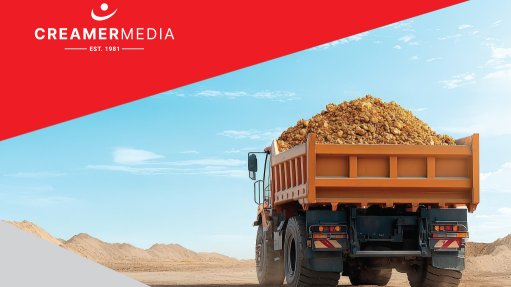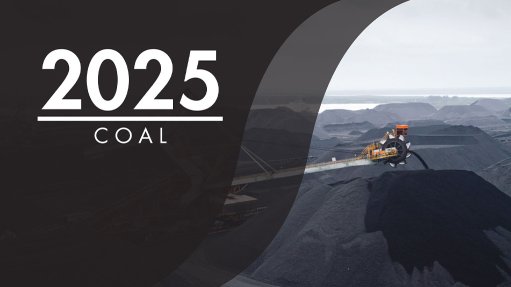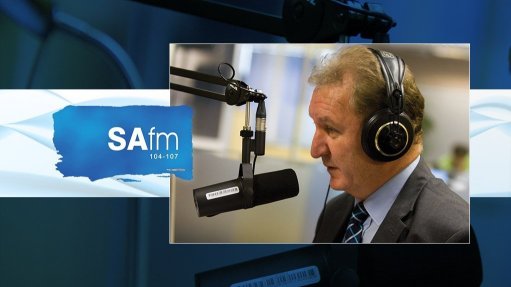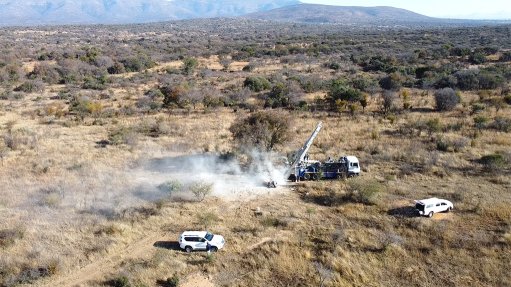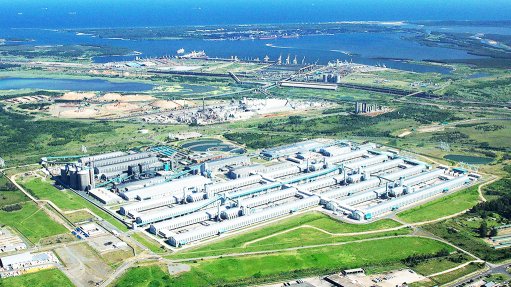IMARC preview: Coal’s divide deepens
This article has been supplied.
By: Richard Roberts - Editorial Director, Beacon Events
When it comes to a consequential discussion about coal’s future challenges and opportunities, 2025 has thrown up all the talking points Coal Australia CEO Stuart Bocking needs for a revealing half-hour or so with Michelle Manook and Nick Jorss at this year’s IMARC event in Sydney.
Australia, a traditional coal exporting powerhouse that still sells about A$90 billion a year of steel-making and thermal coal to mainly Asian markets, has generated most of the slide deck.
Manook, CEO of Future Coal (the former World Coal Institute based in London), has spoken previously about increasing bifurcation in the coal world. Conventional versus new sources of investment and supply; expanding and declining markets for coking and steaming coals; and the split between producers promoting stories about coal’s tomorrow and those unsure where to put the commodity in their annual reports.
Australia is right at the intersection of coal’s crossroads.
Jorss, founder of Coal Australia, was also the founding boss of Stanmore Resources, a circa-A$1.8 billion Australian Securities Exchange-listed domestic coal producer. He chairs another ASX-listed coal miner, Bowen Coking Coal, which recently became a victim of tough market conditions when it went into voluntary administration. Its board blamed “the current challenging environment for the coal industry in Queensland from higher costs, lower global coal prices and higher royalty rates introduced by the Queensland government in 2022” for its predicament.
Bocking, who will moderate a discussion involving Manook and Jorss about the industry’s future at IMARC, said in June this year the previous Queensland state government had “declared war” on the coal industry in 2022 with what Coal Australia labelled “the world’s highest coal royalty regime”. This year the new Queensland government “missed a critical opportunity to ease pressure on the state’s resources sector” with a budget that bypassed royalty reform.
The organisation warned more coal mines would be mothballed. “Queensland’s mines are battling a perfect storm of declining prices, rising costs and punishing tax settings that no other coal-producing jurisdiction in the world comes close to imposing,” it said.
Bocking added: “No serious investor is looking at Queensland anymore — not with this royalty structure.”
While heavyweight local coal producers such as Yancoal Australia and Whitehaven Coal are investing in Queensland assets, this month’s announcement by BHP Mitsubishi Alliance that it would shutter the Saraji South met-coal mine in the Bowen Basin in November underscored “the difficult operating conditions for the sector”, according to Moody’s Ratings. It also highlighted the contrasting actions of producers still playing the long coal game and those in the sector’s exit lounge.
“The announcement follows other metallurgical coal mine curtailments or closures in recent months in Asia and North America,” Moody’s said.
“Metallurgical coal producers globally are facing increasingly difficult operating conditions amid a confluence of market, policy and cost pressures amid weaker steel demand. These challenges are compounded by weaker steel production, especially in China, the world's largest producer of steel and consumer of metallurgical coal.”
Moody’s says it expects met-coal prices to stay where they have been this year – about 30% below 2024 levels – for at least the next 12 months. Prices had been on a declining trend since late 2023.
BMA is 50% owned by BHP which is no longer the coking coal behemoth it once was. The commodity contributed only 2% of its FY25 EBITDA.
“However, weak metallurgical prices will pressure earnings and credit metrics for miners with significant exposure to this commodity,” Moody’s said.
The agency said that list included ASX-listed Coronado Global Resources, whose “ability to raise capital remains constrained by tightening covenants and rating-linked conditions on its $75 million asset-backed loan”. The company, which produces coking and thermal coal in the Bowen Basin and in Virginia and West Virginia, USA, recently reported a A$172 million first-half net loss and has seen a c60% decline in its market value this year. “The negative outlook reflects ongoing uncertainty around Coronado’s ability to secure additional funding and deliver a sustainable operating position without a recovery in coal prices.”
Future Coal chair Mike Teke this month turned the spotlight back on financiers, saying it was “time to fund coal, metallurgical and modern, low-emission thermal coal, fairly and equally”, as banks such as Australia’s Macquarie Bank ease some coking coal lending conditions while maintaining a ban on thermal coal backing.
“Coal remains the world’s largest single source of electricity, meeting 33% of global demand,” Teke said.
“In 2024, global coal consumption reached a record high, with commercial banks investing more than US$130 billion across Asia, the United States and Europe. This is not just a measure of demand, it reflects coal’s enduring role in national and energy security, industrial resilience, and sustainable economic growth. Yet in many policy and investment frameworks, coal is still excluded or unfairly treated. This approach ignores its irreplaceable role in industries like steel, cement and fertiliser and its potential to deliver significant emissions reductions when paired with modern technologies.”
Teke’s message echoed an earlier call by Manook for financial groups to not exclude “responsibly stewarded” thermal and coking coal from funding as total coal demand hit a new projected peak (according to the International Energy Agency) of 8.5 billion tonnes in 2025. “You’ve got major coal-based economies, and those that are allied to them, looking at coal as strategic. And you’ve got other economies, probably mostly in the Global North, looking at coal as stranded,” Manook has said.
Privately-owned Pembroke Resources said it did not seek support from the Australian debt market for a US$550 million bond secured earlier this year to fund expansion of the Olive Downs met-coal mine in central Queensland. Its initial A$500 million funding for the $1 billion project in 2021 included $175 million in backing from the Northern Australia Infrastructure Facility (NAIF). “I haven’t seen a move of the big four Australian banks into coal again in any hurry despite it being the second-biggest export of this country,” Pembroke CEO Barry Tudor told an Australian newspaper.
Coal Australia chair Robert Bishop this month implored federal and state governments in Australia to set sensible policies that recognised both the coal industry’s economic contribution to the country and the realities of international markets. “As a country, we need to understand that coal is going to be needed for many years to come. If you look at any of the sensible agencies which predict coal use, it is increasing,” he said.
Bishop, also CEO of coal producer New Hope Group, said given the relative quality and historical cost advantages of Australian-produced coals, “it makes sense” for supply from the country to displace output from other sources if it remained competitive.
ASX-listed New Hope, which has a current market value around A$3.5 billion, is one of a number of local producers trying to balance capital demands of their businesses, growth investments and returns to loyal shareholders. M&A will also continue to feature in the growth column as companies target brownfield, permitted opportunities, established infrastructure and labour pools, and built supply channels to de-risk future expansion.
Whitehaven Coal, which last year outlaid US$3.2 billion for BMA coking coal mines in central Queensland, is a new-age model for the Australian coal space with its focus on technology and innovation, its capital management strategy and healthy balance sheet, its circa-66%-34% coking and thermal coal business split and its so far consistent execution, evidenced by FY25 net profit and EBITDA of A$649 million and $1.36 billion, respectively, in a tough year for the sector.
It generated $1.13 billion of operational cashflow in FY25, up more than 7% year-on-year, on 53% higher revenue of $5.83 billion.
“We’ve had a very good year and certainly execution has been excellent across pretty much every dimension of our business,” CEO Paul Flynn said last month.
Whitehaven has a clear operational focus: “Let’s sweat the assets and continue to drive the returns and let’s get the cost base even sharper – that's our focus for this year,” Flynn said.
It’s also allocating new brownfield project spend in its $340-440 million FY26 capex bucket ($393m last year) at a time when it is looking to maintain attractive shareholder returns.
Supply chain shift
Emblematic of another notable shift in the coal production landscape in historically important jurisdictions such as Australia was a Flynn comment about mining equipment supply chains. He was asked about the cost of new underground longwall mining systems and said: “That's a really interesting question.
“A couple of years ago I would have said $300-400 million, but ... that would have been a European procurement. I don’t think that’s the case anymore.
“The numbers are likely to be half that and [the equipment] would come out of China, given they are the experts in underground mining and 60-70% of their volume comes from underground [with] longwall being a big piece of that. They are the experts.
“We are obviously using Chinese technology in our trucks now and the big refurbishment that we’ve been through incorporates a lot of Chinese gear.
“So we’re comfortable with that and we understand the quality dimensions of that. Generally it’s been pretty good.”
Article Enquiry
Email Article
Save Article
Feedback
To advertise email advertising@creamermedia.co.za or click here
Announcements
What's On
Subscribe to improve your user experience...
Option 1 (equivalent of R125 a month):
Receive a weekly copy of Creamer Media's Engineering News & Mining Weekly magazine
(print copy for those in South Africa and e-magazine for those outside of South Africa)
Receive daily email newsletters
Access to full search results
Access archive of magazine back copies
Access to Projects in Progress
Access to ONE Research Report of your choice in PDF format
Option 2 (equivalent of R375 a month):
All benefits from Option 1
PLUS
Access to Creamer Media's Research Channel Africa for ALL Research Reports, in PDF format, on various industrial and mining sectors
including Electricity; Water; Energy Transition; Hydrogen; Roads, Rail and Ports; Coal; Gold; Platinum; Battery Metals; etc.
Already a subscriber?
Forgotten your password?
Receive weekly copy of Creamer Media's Engineering News & Mining Weekly magazine (print copy for those in South Africa and e-magazine for those outside of South Africa)
➕
Recieve daily email newsletters
➕
Access to full search results
➕
Access archive of magazine back copies
➕
Access to Projects in Progress
➕
Access to ONE Research Report of your choice in PDF format
RESEARCH CHANNEL AFRICA
R4500 (equivalent of R375 a month)
SUBSCRIBEAll benefits from Option 1
➕
Access to Creamer Media's Research Channel Africa for ALL Research Reports on various industrial and mining sectors, in PDF format, including on:
Electricity
➕
Water
➕
Energy Transition
➕
Hydrogen
➕
Roads, Rail and Ports
➕
Coal
➕
Gold
➕
Platinum
➕
Battery Metals
➕
etc.
Receive all benefits from Option 1 or Option 2 delivered to numerous people at your company
➕
Multiple User names and Passwords for simultaneous log-ins
➕
Intranet integration access to all in your organisation




